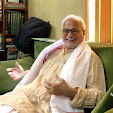How widespread Polanyi’s influence is today
A short history of economic anthropology from The Memory Bank by keith
In The Great Transformation (1944), Polanyi brought a radical critique of modern capitalism to bear on his moment in history... Conclusions: the next stage
Anthropologists aim to discover the principles animating economic organization at every level from the most particular to the universal. The purpose of economic anthropology, when still known as ‘the economics of primitive man’, was to test the claim that a world economic order must be founded on capitalist principles. The search was on for alternatives that might support a more just economy, whether liberal, socialist, anarchist or communist. Hence the interest in origins and evolution, since society was understood to be in movement and had not yet reached its final form. Anthropology was the most inclusive way of thinking about economic formation; only secondarily was it a critique of capitalist inequality.
The First World War marked a new stage in the convergence between capitalism and highly centralized state bureaucracies. The universities expanded and knowledge was compartmentalized as so many impersonal disciplines modelled on the natural sciences. Anthropology found itself pigeon-holed as the study of those parts of humanity that the others could not reach. The concentration of social power in immense anonymous institutions discouraged people from trying to make a better world by themselves. So, from being at one time a constructive economic enterprise of universal intent, anthropology came to be driven by the passive aim to accumulate an objectified data bank on ‘other cultures’, largely for internal consumption. The profession became fixed in a cultural relativist paradigm, by definition opposed to the universalism of economics. Anthropologists based their intellectual authority on extended sojourns in remote areas and their ability to address the world’s economic trajectory was much impaired as a result.
We have identified here three stages in the development of economic anthropology. In the first, up to and including the Second World War, ethnographers sought to engage the more general propositions of neo-classical economics with their particular findings about “primitive societies”. They failed, mainly because they misunderstood the economists’ epistemological premises. In the second stage, coinciding roughly with the West’s experiment in social democracy at the height of the Cold War, anthropologists argued among themselves about whether or not special theories and methods were needed to study their preserve, tribal and peasant economies, thereby opening the way for Marxists to exercise a temporary dominance, but again mainly referring to the traditional objects of ethnography.
The third stage of neo-liberal globalization, which may or may not be concluding in our day, has seen anthropologists open themselves up to the full range of human economic organization, studied from a variety of perspectives. So far, they have only rarely addressed world economy as such, preferring in the main to stick with the tradition of ethnographic observation (Gregory and Altman 1989). The time is ripe for anthropologists to take the extra step of addressing the world economy as a whole as well as its parts; and engaging with the historical sweep of Polanyi’s great war-time oeuvre might be one means to that end.
The issue remains whether or not capitalist economy rests on human principles of universal validity. This argument about sameness and difference plagued post-war economic anthropology, much as it plagued nationalist discourse in 19th century Germany. Anthropologists can be proud of our discipline’s commitment to joining the people where they live in order to find out what they think and do. But fieldwork-based ethnography needs to be integrated once more with the perspective on world history that it overthrew. 7:47 PM 6:36 PM
